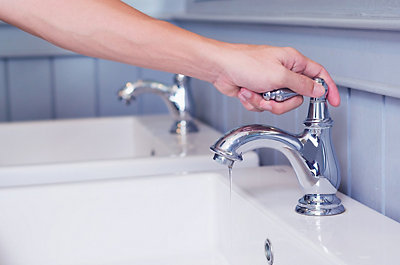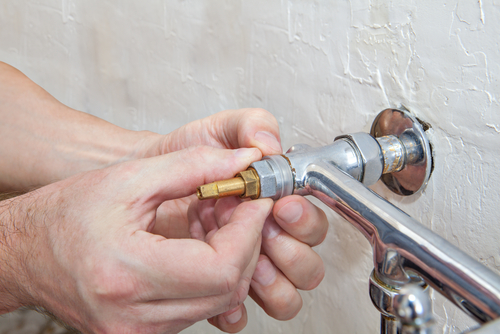Our Benefits of Fixing a Faulty Faucet
Our Benefits of Fixing a Faulty Faucet
Blog Article
What are your opinions with regards to 4 Common Reasons for a Leaky Faucet?

Trickling faucets could seem like a minor aggravation, but their effect goes beyond just the nuisance of the audio. From wasting water to incurring unneeded monetary costs and health and wellness dangers, disregarding a leaking tap can cause different effects. In this write-up, we'll look into why it's crucial to address this usual house concern immediately and successfully.
Waste of Water
Ecological Influence
Leaking faucets contribute significantly to water wastefulness. According to the Environmental Protection Agency (EPA), a single tap trickling at one drip per secondly can squander more than 3,000 gallons of water each year. This not only pressures water sources yet likewise impacts ecosystems and wild animals based on them.
Step-by-Step Overview to Fixing a Dripping Faucet
Devices Called for
Before attempting to deal with a dripping tap, collect the required devices, consisting of an adjustable wrench, screwdrivers, substitute components (such as washing machines or cartridges), and plumber's tape.
Typical Faucet Issues and Their Solutions
Identify the type of tap and the certain problem triggering the drip. Common troubles consist of worn-out washers, rusty shutoff seats, or defective O-rings. Refer to maker instructions or on-line tutorials for step-by-step support on repair work.
Financial Prices
Raised Water Expenses
Past the environmental impact, trickling taps can inflate water expenses considerably. The built up waste over time translates into higher energy expenses, which could have been stayed clear of with timely repair services.
Possible Residential Property Damages
Additionally, long term dripping can cause harm to fixtures and surfaces bordering the faucet. Water accumulation can create discoloration, corrosion, and even structural concerns if left unattended, causing extra repair work expenses.
Wellness Issues
Mold And Mildew and Mold Growth
The continuous presence of dampness from a leaking faucet produces a suitable environment for mold and mildew and mildew development. These fungi not just compromise interior air quality yet also posture health dangers, especially for individuals with breathing conditions or allergies.
Waterborne Illness
Stationary water in dripping faucets can come to be a breeding ground for microorganisms and other microorganisms, increasing the danger of waterborne conditions. Pollutants such as Legionella microorganisms thrive in stagnant water, possibly leading to severe health problems when ingested or inhaled.
Do it yourself vs. Specialist Repair
Advantages and disadvantages of DIY Repair Work
While some may attempt to fix a trickling tap themselves, DIY repairs include their very own set of challenges. Without proper expertise and devices, do it yourself efforts can worsen the issue or lead to insufficient repair services, extending the problem.
Advantages of Employing a Professional Plumber
Working with a specialist plumber makes sure that the underlying source of the leaking tap is dealt with successfully. Plumbing technicians have the know-how and equipment to identify and repair tap concerns effectively, conserving time and lessening the threat of more damages.
Ecological Obligation
Private Contribution to Conservation
Taking responsibility for repairing dripping faucets straightens with more comprehensive initiatives toward water conservation and environmental sustainability. Every individual's activities jointly make a considerable effect on preserving priceless resources.
Sustainable Living Practices
By focusing on timely repairs and taking on water-saving routines, individuals add to sustainable living techniques that benefit both existing and future generations.
Safety nets
Regular Upkeep Tips
To prevent leaking faucets, do regular maintenance such as cleansing aerators, examining for leakages, and replacing worn-out components quickly. In addition, consider setting up water-saving tools or upgrading to extra efficient fixtures.
Value of Prompt Repairs
Dealing with trickling taps as quickly as they're noticed avoids additional water wastefulness and possible damages, ultimately saving both water and money over time.
Effect On Property Value
Perception of Well-Maintained Residential Or Commercial Property
Preserving a building in good condition, consisting of attending to maintenance issues like dripping taps, enhances its viewed worth and charm amongst possible customers or renters.
Impact on Resale Worth
Characteristics with well-kept plumbing components, including taps, command higher resale worths in the real estate market. Resolving leaking faucets can contribute to a positive perception throughout residential property evaluations and settlements.
Conclusion
Attending to a trickling tap exceeds simple benefit; it's an important action toward conserving water, lowering financial costs, and protecting health and wellness and property. Whether through DIY repair work or expert support, acting to repair leaking faucets is a small yet impactful means to advertise accountable stewardship of resources and add to a much healthier, a lot more sustainable future.
How to Fix a Dripping or Leaky Faucet
A leaking faucet is one of the most common problems that homeowners encounter, but it being commonplace doesn’t make it any less annoying. The constant drip drip drip of a leaking bathtub faucet, showerhead, or sink tap can disturb your home’s serenity. Left neglected, a dripping faucet can also result in higher water bills and discoloration or mold growth in your sink or plumbing fixtures.
Fortunately, you don’t have to be a trained plumber to know how to stop a dripping faucet. With some basic tools, replacement parts, and a little patience, leaky faucet repair is a breeze. In this article, we’ll explain what causes dripping faucets and how you can fix them.
What Causes a Leaking Faucet?
Kitchen and bathroom faucets come in all manner of designs, but most involve some combination of valves, O-rings, seals, and washers. The O-ring is usually the weakest link, but any one of these pieces can wear down over time. Heat, moisture, temperature fluctuations, minerals, mold, and movement can contribute to warping and corrosion, breaking the watertight seal. This just comes with the territory of being a homeowner. Everything is always subject to wear and tear, and some component parts of your appliances and fixtures need to be replaced on occasion. At least replacement O-rings are cheap!
More rarely, dripping faucets can be a symptom of excessively high water pressure. Were this the case in your home, you would probably notice that the leak is not isolated to one faucet. Water pressure issues are harder to resolve on your own. We recommend contacting a professional plumber if you suspect your water pressure is too high.
How to Fix a Dripping Faucet
Pipe wrench or monkey wrench Allen wrench set Screwdrivers Old towel or rag Shut off the water.
Before you do anything, you need to turn off the water to keep from drenching your kitchen or bathroom. You should find a valve under the sink and against the wall. Once you’ve turned this valve, try turning the faucet on to confirm that the water source has been cut off.
If you can’t locate your local valve for the faucet you’re working on, you can always shut off the water to the house at the main valve. Of course, this will prohibit anyone from using the sinks, showers, or toilets while you’re working on the faucet that’s giving you trouble.
Plug or block the drain.
You’ll be disassembling the faucet and removing some small bits of hardware. Plug the drain with a stopper or rag to avoid the possibility of a small screw falling into your P-trap.
Take apart the faucet assembly.
There are several varieties of kitchen and bathroom faucets, each with its own manner of assembly. For detailed instructions on how to disassemble your faucet, you can refer to the fixture’s manual or contact the manufacturer. If you know whether you have a ball, disc, cartridge, or compression faucet, you can find detailed schematics online.
In general, you need to begin by removing the faucet handles. You might notice a small screw that you’ll need to remove with a screwdriver or Allen wrench. If you don’t see any visible securing hardware, it’s likely hidden under a decorative cap that can be unscrewed or popped off with flathead screwdriver.
Remove each piece methodically, consulting a schematic when necessary. Take notes or arrange the pieces in such a way to make it easier to correctly reassemble the faucet later.
Remove the cartridge.
Once you’ve removed the handles and securing hardware, you should be able to remove the valve cartridge or stem. Some cartridges will slide right out. Other faucet models will require you to loosen a nut with a pipe wrench before you can remove the valve stem.
Examine the exposed hardware.
With the cartridge or stem removed, inspect the component parts. Check the rubber O-rings for wear and tear. Also examine the seat washer for corrosion or other damage. These pieces are usually the responsible parties for a dripping faucet, but it’s worth inspecting the other component parts while you have the faucet disassembled.
Find replacement parts.
Once you’ve identified which faucet component has failed, find an identical replacement. Your local hardware store should have O-rings, seat washers, and other standard components in stock. If you have a luxury or uncommon faucet, you may have to contact the manufacturer for a replacement part.
It’s a good idea to take your old parts with you to the hardware store so you can compare them with the store’s inventory and be sure you’re purchasing the correct replacement.
Reassemble the faucet.
With your new parts in hand, reconstruct the faucet and handles. Don’t be tempted to overtighten screws or nuts. You might think this could create a better seal, but it can instead damage or bend a delicate part of the assembly and create a new problem for you.
Turn on the water and test the faucet.
The only thing left to do is test your work. Unplug the sink, turn the water back on, and try the faucet. Congratulate yourself on a job well done!
https://www.libertyhomeguard.com/how-to-fix-a-dripping-or-leaky-faucet/

Hopefully you enjoyed our topic about 4 Common Reasons for a Leaky Faucet. Many thanks for taking time to read our blog. Loved our entry? Please quickly share it. Help other people find it. I appreciate reading our article about Leaky Faucets: Why They Happen & What to Do About Them.
Report this page